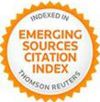H-BIM for the Conservation of Wooden Structures: a Knowledge-Based Protocol Integrating Geometry, History and Structure 
Abstract
This study investigates the potential of Heritage Building Information Modeling (H-BIM) as a framework for systematically gathering and analyzing data on wooden structures in historic buildings. The objective is to enhance the understanding of structural implications arising from historical, construction, and conservation-related factors. A set of customized properties is introduced to facilitate the acquisition of key data, establishing predefined relationships to enable effective correlation between essential diagnostic aspects, including geometry, historical contents, construction characteristics, wood defects, and decay processes. The influence of these factors on structural behavior is emphasized to ensure a comprehensive assessment that integrates the entire interdisciplinary knowledge. The proposed methodology is applied to a case study involving the wooden trusses of a historic building in Parma. Therefore, the main achievement of this paper is to test the efficacy of H-BIM in receiving spatially localized and interdisciplinary information for a critical structural analysis.
Keywords
Full Text:
PDFDOI: http://dx.doi.org/10.2423/i22394303v15n1p159
References
Aveta, A. (2013). Consolidamento e restauro delle strutture in legno. Tipologie—Dissesti—Diagnostica— Interventi. Palermo, Italy: Dario Flaccovio Editore.
Bassier, M., Hadjidemetriou, G., Vergauwen, M., Van Roy, N., & Verstrynge, E. (2016). Implementation of Scan-to-BIM and FEM for the Documentation and Analysis of Heritage Timber Roof Structures. In Digital Heritage. Progress in Cultural Heritage: Documentation, Preservation, and Protection: 6th International Conference, EuroMed 2016, Nicosia, Cyprus, October 31 – November 5, 2016, Proceedings, Part I (pp. 79–90). Cham, Switzerland: Springer.
Bruno, N., & Roncella, R. (2019). HBIM for Conservation: A New Proposal for Information Modeling. Remote Sensing, 11(15), 1751. https://doi.org/10.3390/rs11151751
Bruno, S., & De Fino, M. (2021). Decision-making for historic building diagnosis by logical inference in HBIM approach: the case of onsite inspection of timber elements. SCIRES-IT SCIentific RESearch and Information Technology, 11(2), 67-82. http://dx.doi.org/10.2423//i22394303v11n2p67
Cabaleiro, M., Hermida, J., Riveiro, B., & Caamaño, J. C. (2017). Automated processing of dense points clouds to automatically determine deformations in highly irregular timber structures. Construction and Building Materials, 146, 393–402. https://doi.org/10.1016/j.conbuildmat.2017.04.037
Celli, S., & Ottoni, F. (2023). Managing Information to Improve Conservation: The HBIM of the Wooden Chain of Santa Maria del Fiore. Sensors, 23(10), 4860. https://doi.org/10.3390/s23104860
Cruz, H., Yeomans, D., Tsakanika, E., Macchioni, N., Jorissen, A., Touza, M., Mannucci, M., & Lourenço, P. B. (2014). Guidelines for On-Site Assessment of Historic Timber Structures. International Journal of Architectural Heritage, 9(3), 277–289. https://doi.org/10.1080/15583058.2013.774070
Della Torre, S. (2021). Italian perspective on the planned preventive conservation of architectural heritage. Frontiers of Architectural Research, 10, 108-116. https://doi.org/10.1016/j.foar.2020.07.008
Delpozzo, D., Treccani, D., Appolonia, L., Adami, A., & Scala, B. (2022). HBIM and thematic mapping: Preliminary results. The International Archives of the Photogrammetry, Remote Sensing and Spatial Information Sciences, XLVI-2/W1-2022, 199–206. https://doi.org/10.5194/isprs-archives-XLVI-2-W1- 2022-199-2022
Ente Italiano di Normazione - UNI 11119:2004 - – Beni culturali – Manufatti lignei –Strutture portanti degli edifici – Ispezione in situ per la diagnosi degli elementi in opera.
Ente Italiano di Normazione - UNI 11130:2004– Beni culturali – Manufatti lignei – Terminologia del degradamento del legno. UNI, Ente Italiano di Normazione.
Ente Italiano di Normazione - UNI 11204:2007– Beni culturali – Manufatti lignei – Determinazione dell’umnidità. UNI, Ente Italiano di Normazione.
European Committee for Standardization - EN 338:2016 - Structural timber - Strength classes.
European Committee for Standardization – EN 17121:2019 - Conservation of cultural heritage - Historic timber structures - Guidelines for the on-site assessment of load-bearing timber structures.
Feio, A., & Machado, J. S. (2015). In-situ assessment of timber structural members: Combining information from visual strength grading and NDT/SDT methods - A review. Construction and Building Materials, 101, 1157–1165. https://doi.org/10.1016/j.conbuildmat.2015.05.123
Garcia-Gago, J., Sánchez-Aparicio, L. J., Soilán, M., & González-Aguilera, D. (2022). HBIM for supporting the diagnosis of historical buildings: Case study of the Master Gate of San Francisco in Portugal. Automation in Construction, 141, 104453. https://doi.org/10.1016/j.autcon.2022.104453
Henek, V., & Venkrbec, V. (2017). BIM-Based Timber Structures Refurbishment of the Immovable Heritage Listed Buildings. IOP Conference Series: Earth and Environmental Science, 95(6), 062002. https://doi.org/10.1088/1755-1315/95/6/062002
Mao, Y., Lu, H., Xiao, Y., Lai, Z., & Huang, L. (2024). A Parametric HBIM Approach for Preservation of Bai Ethnic Traditional Timber Dwellings in Yunnan, China. Buildings, 14(7), 1960. https://doi.org/10.3390/buildings14071960
Massafra, A., Prati, D., Predari, G., & Gulli, R. (2020). Wooden Truss Analysis, Preservation Strategies, and Digital Documentation through Parametric 3D Modeling and HBIM Workflow. Sustainability, 12(12), 4975. https://doi.org/10.3390/su12124975
Mol, A., Cabaleiro, M., Sousa, H. S., & Branco, J. M. (2020). HBIM for storing life-cycle data regarding decay and damage in existing timber structures. Automation in Construction, 117, 103262. https://doi.org/10.1016/j.autcon.2020.103262
N.Panayiotou, P., & Kontovourkis, O. (2024). A Holistic Documentation and Analysis of Timber Roof Structures in Heritage Buildings Using Scan to HBIM Approaches. In Driven Intelligence - Proceedings of the 42nd Conference on Education and Research in Computer Aided Architectural Design in Europe (vol 1. pp. 715–724). Nicosia, Cipro: eCAADe. https://doi.org/10.52842/conf.ecaade.2024.1.715
Oreni, D., Brumana, R., Georgopoulos, A., & Cuca, B. (2013). HBIM for conservation and management of built heritage: Towards a library of vaults and wooden bean floors. ISPRS Annals of the Photogrammetry, Remote Sensing and Spatial Information Sciences, II-5/W1, 215–221. https://doi.org/10.5194/isprsannals- II-5-W1-215-2013
Özkan, T., Lavric, I., Hochreiner, G., & Pfeifer, N. (2025). Automated 3D Modeling vs. Manual Methods: A Comparative Study on Historic Timber Tower Structure Assessment. Remote Sensing, 17(3), 448. https://doi.org/10.3390/rs17030448
Özkan, T., Pfeifer, N., & Hochreiner, G. (2024). Automatic completion of geometric models from point clouds for analyzing historic timber roof structures. Frontiers in Built Environment, 10, 1368918. https://doi.org/10.3389/fbuil.2024.1368918
Prati, D., Guardigli, L., & Mochi, G. (2021). Displacement and deformation assessment of timber roof trusses through parametric modelling. The case of San Salvatore’s church in Bologna. Rivista Tema, Vol. 7(N. 1 (2021). https://doi.org/10.30682/tema0701c
Riggio, M., Anthony, R. W., Augelli, F., Kasal, B., Lechner, T., Muller, W., & Tannert, T. (2014). In situ assessment of structural timber using non-destructive techniques. Materials and Structures, 47(5), 749– 766. https://doi.org/10.1617/s11527-013-0093-6
Riggio, M., D’Ayala, D., Parisi, M. A., & Tardini, C. (2018). Assessment of heritage timber structures: Review of standards, guidelines and procedures. Journal of Cultural Heritage, 31, 220–235. https://doi.org/10.1016/j.culher.2017.11.007
Santini, S., Borghese, V., & Baggio, C. (2023). HBIM-Based Decision-Making Approach for Sustainable Diagnosis and Conservation of Historical Timber Structures. Sustainability, 15(4), 3003. https://doi.org/10.3390/su15043003
Santos, D., Cabaleiro, M., Sousa, H. S., & Branco, J. M. (2022). Apparent and resistant section parametric modelling of timber structures in HBIM. Journal of Building Engineering, 49, 103990. https://doi.org/10.1016/j.jobe.2022.103990
Santos, D., Sousa, H. S., Cabaleiro, M., & Branco, J. M. (2023). HBIM Application in Historic Timber Structures: A Systematic Review. International Journal of Architectural Heritage, 17(8), 1331–1347. https://doi.org/10.1080/15583058.2022.2034071
Tampone, G. (2000). Il restauro delle strutture di legno. Milano, Italy: Hoepli.
Wang, J., You, H., Qi, X., & Yang, N. (2022). BIM-based structural health monitoring and early warning for heritage timber structures. Automation in Construction, 144, 104618.
https://doi.org/10.1016/j.autcon.2022.104618
Wang, Z., Lu, J., Hu, Q., Wu, Q., Tan, W., Khaliq, U., Al Mamun, A., & Zhang, X. (2024). Self-adaptive Modelling Method for Chinese Ancient Timber Architecture Based on Digital Structure Metamodel. Nexus Network Journal, 26(1), 123–145. https://doi.org/10.1007/s00004-023-00755-8
Zanazzi, E., & Ottoni, F. (2023). Per un calcolo ‘di qualità’: Storia di una sfida qualitativa alla quantificazione, passando per la conoscenza. In S. Della Torre & V. Russo (Eds.), Restauro dell’architettura. Per un progetto di qualità (pp. 951-957). Roma, Italy: Edizioni Quasar.
Article Metrics
Metrics powered by PLOS ALM
Refbacks
- There are currently no refbacks.
Copyright (c) 2025 Maria Parente, Federica Ottoni

This work is licensed under a Creative Commons Attribution-NonCommercial-NoDerivatives 4.0 International License.
SCIRES-IT, e-ISSN 2239-4303
Journal founded by Virginia Valzano





